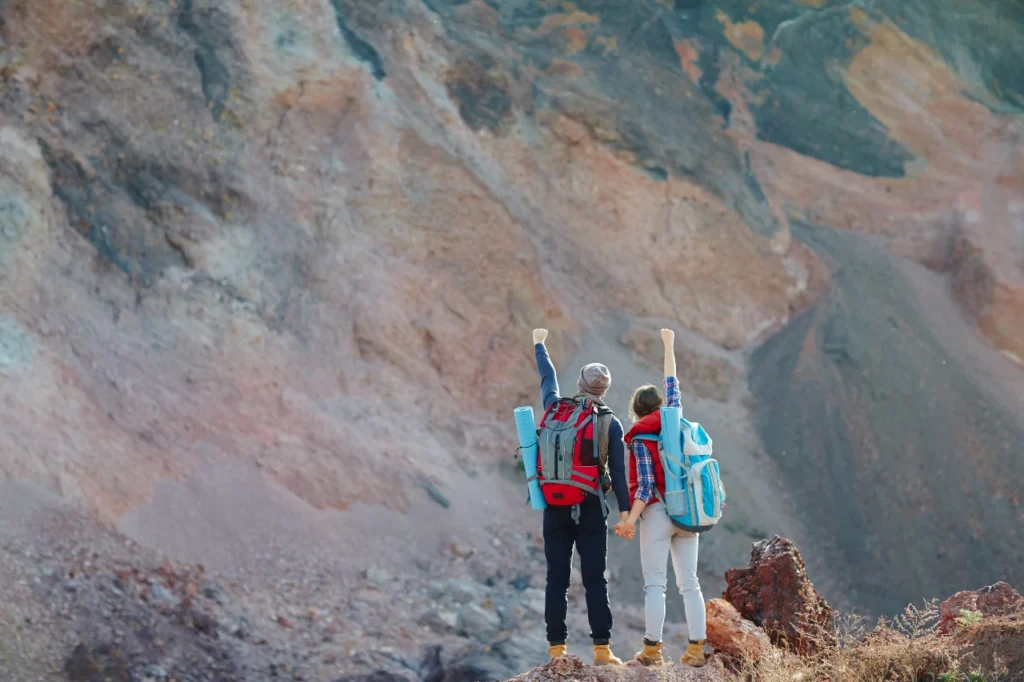Langtang and Gosainkunda Trek get on gear with an overland journey to the small hilly town of Dhunche, the main trading post of the area. From here we spend four days hiking up through this beautiful alpine valley to Kyangjin where we rest for a day for some high & wild exploration of the high mountains and glacial systems hereabouts. We then revert back on the same path for three days before a journey to the sacred lakes of Gosainkunda, a major pilgrimage sight for both Hindus and Buddhists. We cross the Laurebina pass (4600m) and drop into the lush Helambu region and get some upfront experiences of different cultural lifestyles on these huge mountains.
The Langtang valley is appropriately called ‘the valley of glaciers’. Down hereabouts, the mountains reach towering heights, almost touching the clouds. The valley is physically made up of pine forest, gushing mountain streams, rugged rock and silver-grey peaks with grassy glens and lovely meadows strewn with daisies and wildflowers. We come across serene Buddhist monasteries, a cheese factory, hairy yaks, glaciers and mountain lakes that literally stir the emotions for a love of the natural landscapes we come across in this unique region. The colourful typical vibrant Sherpa villages teem with life & give us deep insights into how the local folks live their lives in these rugged territories…
We clamber through a rugged trail with dramatic views: to the west Himal Chuli (7893m) Manaslu (8156mm) and Ganesh Himal (7406m). On a sunny day with bright blue skies, even the Annapurna range can be seen rising up behind and to the north across the valley is the delightful Langtang Lirung. We hike past a few huts in the high scenic area of Laurebina pass, cross a small ridge and behold our first views of the holy lakes. We reckon a dozen lakes can be found in the Gosainkunda Basin, the main three being Saraswatikunda, Bhairabkunda, and Gosainkunda. As legends would have it, Shiva created Gosainkunda when he pierced a glacier with his trident to obtain water to quench his thirst after having swallowed a poison that threatened to destroy the world.
We finally conclude our trek and head back for an hour’s scenic drive back to Kathmandu after a wonderfully captivating trek in an area very less used in this area, it’s just ‘you, me & the mountains” for a time out in the wilderness down here.
Arrive at Tribhuwan International Airport, Kathmandu, you are welcomed by the team and then you will be transferred to your hotel. This trail goes through Ghorepani Poon Hill. Normally, the trek starts like Phokhara to Nayapul and ends like Phedi to Pokhara.
While early travel tended to be slower, more dangerous, and more dominated by trade and migration, cultural and technological advances over many years have tended to mean that travel has become easier and more accessible. The evolution of technology in such diverse fields as horse tack and bullet trains has contributed to this trend.
The Palace of Fifty five Windows: This magnificent palace was built during the reign of King Yakshya Malla in A.D. 1427 and was subsequently remodeled by King Bhupatindra Malla in the seventeenth century. Among the brick walls with their gracious setting and sculptural design, is a balcony with Fifty five Windows, considered to be a unique masterpiece of woodcarving.
Far far away, behind the word mountains, far from the countries Vokalia and Consonantia, there live the blind texts.
Separated they live in Bookmarksgrove right at the coast of the Semantics, a large language ocean. A small river named Duden flows by their place and supplies it with the necessary regelialia.
Even the all-powerful Pointing has no control about the blind texts it is an almost unorthographic life One day however a small line of blind text by the name of Lorem Ipsum decided to leave for the far World of Grammar.
The Big Oxmox advised her not to do so, because there were thousands of bad Commas, wild Question Marks and devious Semikoli, but the Little Blind Text didn’t listen.
When she reached the first hills of the Italic Mountains, she had a last view back on the skyline of her hometown Bookmarksgrove, the headline of Alphabet Village and the subline of her own road, the Line Lane. Pityful a rethoric question ran over her cheek.







